During one of my trips to the rugged terrain of the Caucasus mountains in Southern Russia, the sight of a majestic creature took my breath away. Towering before me was a Russian Bear Dog, also known as the Caucasian Shepherd Dog, its imposing stature silhouetted against the mountainous backdrop. This was not just any dog; it was a guardian of the mountains, a protector of its territory, with a presence as commanding as the landscape itself.
I have always been drawn to the strength and loyalty of large working dog and the Russian Bear Dog is the best example of these characteristics. Weighing between 99 and 170 pounds and standing 23 to 30 inches tall, their size is matched only by their courage. I’ve learned that these dogs are not merely pets; they are energetic and confident companions, fiercely protective of their family and wary of strangers. Their protective nature, I realized, makes them unsuitable for the confined spaces of apartments and small homes.
In my journey to understand this noble breed, I discovered that owning this Caucasian Shepherd is a significant commitment, both emotionally and financially, as the Russian Bear Dog price ranges from $1,200 to $3,000. Yet, the bond formed with such a dog is invaluable. As I stood there, watching the dog survey its domain, I felt a profound respect for this breed’s history and its role as a guardian in the rugged Caucasus region. The Russian Bear Dog, I concluded, is not just a dog; it is a living testament to the heritage and resilience of the land from which it hails.
TABLE OF CONTENTS
- Russian Bear Dog Quick Breed Summary
- Origins of the Russian Bear Dog
- Russian Bear Dog Physical Appearance
- Russian Bear Dog Temperament and Personality
- Caring for Your Caucasian Shepherd
- Common Health Concerns in Russian Bear Dogs
- Training Your Russian Bear Dog
- FAQs About Russian Bear Dogs
- Is a Russian Bear Dog Right for You?
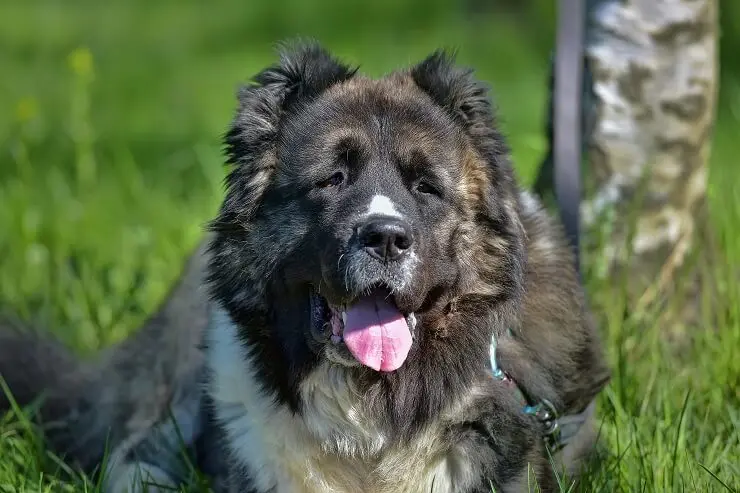
Russian Bear Dog Quick Breed Summary
| Common names: | Russian bear dog, Caucasian shepherd dog, Caucasian mountain dog, Caucasian ovcharka dog |
| Origin: | Southern Russia, Caucasus |
| Breed group: | Working dog |
| Size: | Large |
| Height: | 23–30 inches |
| Weight: | 99–170 pounds |
| Colors: | Brown, gray, black, cream, white, brindle, fawn, apricot |
| Coat: | Double coat, medium-to-long length |
| Life expectancy: | Intelligent, but can be difficult to train |
| Temperament: | Loyal, alert, aloof, energetic, confident, protective |
| Shedding: | Heavy shedders |
| Barking tendency: | Moderate |
| Cost: | $1,200–$3,000 |
Origins of the Russian Bear Dog
The Russian Bear Dog, also known as the Caucasian Shepherd Dog, has its roots deeply embedded in the rugged landscapes of the Caucasus region, which includes countries like Russia, Armenia, Azerbaijan, and Georgia. This breed has a history that spans over several centuries, originally bred by local shepherds to protect livestock from predators such as wolves and bears. The breed’s formidable size and fearless nature made it an ideal guardian against the formidable wildlife of the Caucasus mountains.
Evolution and Purpose
Livestock Guardians
From their earliest days, Caucasian Shepherd Dog were invaluable to the shepherds of the Caucasus mountains. Their primary role was to guard sheep and other livestock, a task for which they were uniquely suited due to their large size, strength, and protective instincts. These dogs were not just pets but essential workers, living alongside the flocks they protected, often in harsh and isolated conditions. Their ability to make independent decisions and their unwavering loyalty to their charges made them indispensable.
Military and Border Guards
Beyond their roles in pastoral settings, Russian Bear Dogs were also employed in military and border guard duties. In the 20th century, the Soviet government recognized the breed’s potential for guarding military installations and borders. Their intimidating presence and keen sense of territory made them excellent deterrents against intruders. This adaptability showcased the breed’s versatility beyond its original pastoral duties.
Modern Day Companions and Protectors
Today, while still used as livestock guardians in some parts of the world, Russian Bear Dogs have also found roles as family protectors and companions. Their loyalty, combined with a natural protective instinct, makes them formidable guardians of their homes. However, their size and need for space make them better suited to life in rural or suburban settings rather than urban apartments. The breed requires owners who understand and respect their need for physical activity, mental stimulation, and clear leadership.
Breeding and Breed History
Historical Breeding Practices
The breeding of Russian Bear Dogs, or Caucasian Shepherd Dogs, has been a careful and deliberate process, deeply intertwined with the breed’s history and the geographical challenges of the Caucasus region. Historically, these dogs were bred for their physical prowess and temperament, traits that were essential for their survival and effectiveness as guardians in the harsh mountainous terrain. Shepherds and breeders selected dogs that exhibited strong protective instincts, physical strength, and the ability to withstand the extreme weather conditions of the region.
Breed Development
Over the centuries, the breed developed into the Russian Bear Dog known today. This development was not documented in the manner of modern breed creation but was a natural evolution influenced by the breed’s working environment. The isolation of different communities within the Caucasus mountains led to variations within the breed, which are still visible in the slightly different types found across the region today.
Modern Breeding Efforts
In the 20th century, with the formation of canine breed clubs and the standardization of breeds, efforts were made to define the Russian Bear Dog more precisely. This led to the establishment of breed standards, which helped unify the breed’s characteristics and ensure that future breeding practices would preserve the dog’s physical and temperamental traits. Modern breeders continue to prioritize health, temperament, and the working capabilities of the Caucasian Shepherds, aiming to maintain its historical significance while ensuring the breed’s adaptability to modern living conditions.
Preservation of the Breed
Today, breeding practices are also focused on the preservation of genetic diversity within the Russian Bear Dog population. Ethical breeders conduct health screenings and genetic testing to prevent hereditary diseases and promote the overall well-being of the breed. These efforts are crucial in maintaining the breed’s historical legacy while ensuring that the Russian Bear Dog continues to thrive as both a working dog and a companion.
Russian Bear Dog Physical Appearance
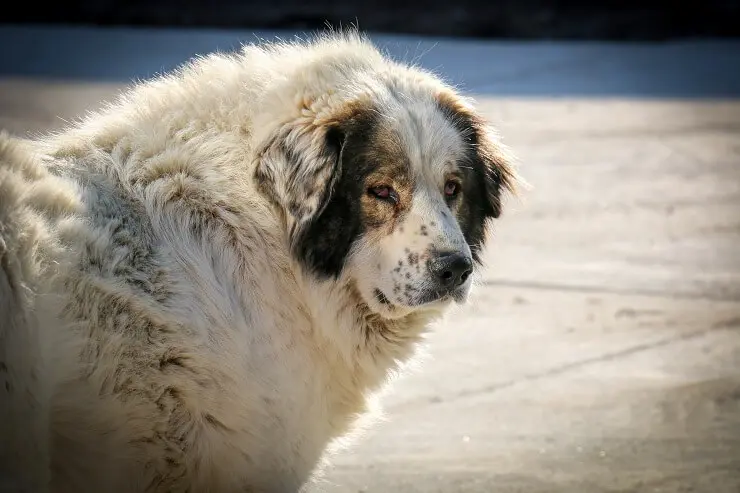
The Russian Bear Dog, bred for its formidable size and strength to guard against predators, stands as a testament to the resilience and rugged beauty of working dog breeds. This section delves into the distinctive appearance characteristics of this majestic breed, including its height and weight, color variations, coat texture, and unique facial features.
Height and Weight
Standing at an impressive 23–30 inches at the withers and weighing between 99–170 pounds, the Caucasian Shepherds is classified among the largest dog breeds. The specific size of an individual dog can vary based on factors such as diet, activity level, and genetics. Notably, males often present with a more imposing stature and larger heads compared to their female counterparts, highlighting the breed’s sexual dimorphism.
Colors
The color palette of the Russian Bear Dog is diverse, with coats commonly showcasing a blend of two or three colors, including white, black, and brindle. The breed also features a range of other hues like brown, gray, cream, fawn, and apricot. A characteristic black muzzle paired with a white chest is frequently observed, though solid black or white dogs are considered rarities, adding a unique charm to those individuals.are rare.
Coat
Adapted to endure the harsh climates of its native region, the Russian Bear Dog boasts a dense, coarse double coat. The protective outer layer is wiry and ranges from medium to long in length, while the undercoat remains soft and insulating. This breed undergoes heavy shedding, particularly as it transitions from its winter coat to a lighter version for warmer seasons. Despite its striking coat, it is not suited for individuals with allergies, as it is not hypoallergenic.
Head and Facial Features
The breed’s head is broad and reminiscent of a bear, featuring a short, robust muzzle that narrows to a black nose. Dark, deep-set, oval eyes give the Russian Bear Dog a piercing gaze, while its powerful jaws are equipped with teeth that echo the appearance of fangs. Historically, ear cropping was practiced to protect the dog from predator attacks, a procedure that, while still recognized by the American Kennel Club, is increasingly viewed as an unnecessary alteration by many in the veterinary community.
Russian Bear Dog Temperament and Personality
The Russian Bear Dog embodies a unique blend of loyalty, confidence, and protective vigilance, making it a remarkable yet challenging companion. Known for their high energy levels, these dogs exhibit an unwavering loyalty to their families, coupled with a natural wariness towards strangers that stems from their deep-rooted guardian instincts. Their independent and intelligent nature demands respect and understanding from their handlers, making them less suited for first-time dog owners or those unfamiliar with complex canine behaviors.
Barking and Guarding Instincts
Despite their formidable presence and natural guarding instincts, Russian Bear Dogs are not prone to unnecessary barking. They vocalize primarily when they perceive a genuine threat, making them efficient rather than excessive watchdogs. This selective barking ensures that when a Caucasian Shepherd does raise an alarm, it is a sign of significant concern.
Early and consistent socialization is crucial in tempering their protective instincts, ensuring they can distinguish between normal interactions and genuine threats. This training helps mitigate aggressive responses to strangers and unfamiliar situations, fostering a more balanced and well-adjusted temperament
Caring for Your Caucasian Shepherd
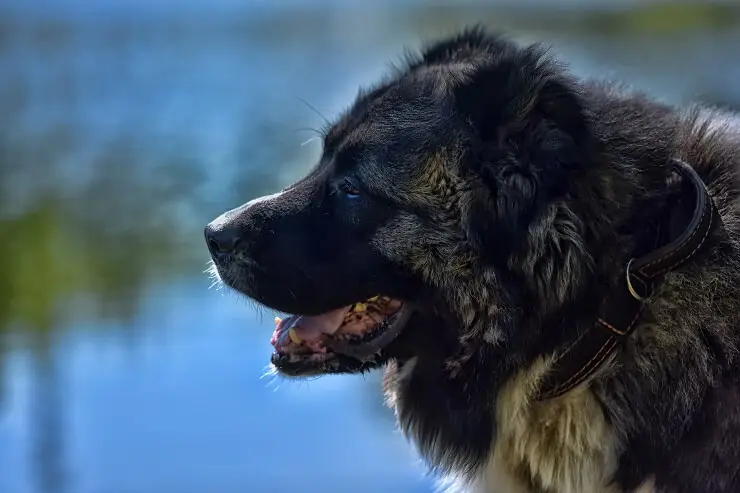
Owning a Russian Bear Dog is a rewarding experience that comes with specific responsibilities aimed at maintaining their physical health and emotional well-being. This section explores the essential aspects of care required to ensure a happy, healthy life for these majestic animals.
Food & Nutrition
A balanced diet is crucial for keeping your Russian Bear Dog healthy and active. Due to their large size and high energy levels, they require a diet rich in proteins and fats to support muscle growth and energy demands. It’s essential to choose high-quality dog food that meets the nutritional requirements for large breeds.
Feeding should be adjusted based on age, weight, and activity level to prevent obesity, which can lead to health issues. Puppies, especially, need diets formulated for large-breed growth to ensure healthy bone development. Regular consultations with your veterinarian can help tailor a feeding plan that’s right for your dog.
Grooming
The thick, double coat of the Russian Bear Dog requires regular grooming to maintain its condition and manage shedding. Weekly brushing is recommended to remove loose fur and prevent matting, with more frequent grooming needed during shedding seasons. Additionally, providing a balanced diet that includes specialized dog food for shedding can help minimize excessive hair loss. Bathing should be done as necessary, using dog-specific shampoo to protect the skin’s natural oils. Attention should also be given to their nails, ears, and teeth, with regular clipping, cleaning, and brushing to promote overall health.
Exercise
Given their high energy levels and working dog heritage, Russian Bear Dogs require ample physical exercise to stay healthy and content. Daily walks, play sessions in a secure area, and opportunities to explore and roam in a safely enclosed space are essential. Exercise not only keeps them physically fit but also helps mitigate behavioral issues stemming from boredom or pent-up energy.
Mental Health
Mental stimulation is as crucial as physical exercise for the Russian Bear Dog. Their intelligent and alert nature means they thrive on challenges and learning. Training sessions, puzzle toys, and interactive games can help keep their minds active and engaged. Socialization from a young age is vital to developing a well-adjusted temperament, teaching them to navigate various situations and environments confidently.
These dogs thrive on human interaction and can suffer from separation anxiety if left alone for extended periods. Ensure that your living arrangement allows for their need for companionship. If you work long hours, consider a dog-sitter, doggy daycare, or a neighbor who can check in on your furry friend.
Living Arrangement
The living environment you provide for your Russian Bear Dog plays a pivotal role in their overall well-being. These dogs are not suited for apartment living or cramped spaces due to their large size and need for space to move around comfortably. Ideally, a spacious yard with secure fencing is the best setting for a Russian Bear Dog. This allows them to exercise and explore freely while ensuring their safety. Fencing should be sturdy and high to prevent any escape attempts, as these dogs have a protective nature that may lead them to roam when they perceive a threat.
Consider the climate of your region when planning for your dog’s living arrangement. Russian Bear Dogs have a thick double coat designed to withstand freezing temperatures. They may struggle in extremely hot and humid conditions, so access to shade and fresh water is essential during hot weather.
Common Health Concerns in Russian Bear Dogs
While Caucasian Shepherds are generally hardy and robust, like all breeds, they may be prone to certain health issues. Being aware of these common health concerns can help you provide proactive care for your beloved companion. Here are three health issues to watch out for:
Hip and Elbow Dysplasia
Hip dysplasia is a genetic condition that can affect Russian Bear Dogs, especially as they age. It occurs when the hip joint doesn’t develop properly, leading to arthritis and pain. Regular veterinary check-ups and maintaining a healthy weight can help manage this condition. Avoid excessive exercise during their growing phase to reduce the risk of hip dysplasia.
Bloat
Bloat, or gastric dilation and volvulus (GDV), is a potentially life-threatening condition that can affect deep-chested breeds like Russian Bear Dogs. It involves the stomach filling with gas, twisting, and cutting off blood supply. Symptoms include restlessness, distended abdomen, and unproductive vomiting. Immediate veterinary attention is crucial to save the dog’s life. Feeding smaller, frequent meals and avoiding vigorous exercise after meals can help reduce the risk.
Heart Conditions
Russian Bear Dogs can be susceptible to various heart conditions, including cardiomyopathy. Regular heart check-ups by a veterinarian are essential to detect and manage these issues early. Maintaining a healthy diet and exercise regimen is important for heart health.
Lifespan
The Caucasian Shepherds is known for its robust health and longevity, with a typical lifespan ranging from 10 to 12 years. This impressive lifespan for a giant breed is attributed to centuries of selective breeding for hardiness and the ability to thrive in harsh environments. However, like all large breeds, they are prone to certain health issues, such as hip dysplasia and heart conditions. Responsible breeding practices, proper nutrition, regular veterinary care, and adequate exercise can significantly contribute to maximizing their lifespan. Owners should be committed to providing a healthy lifestyle to ensure these majestic guardians enjoy a full and vibrant life.
Training Your Russian Bear Dog
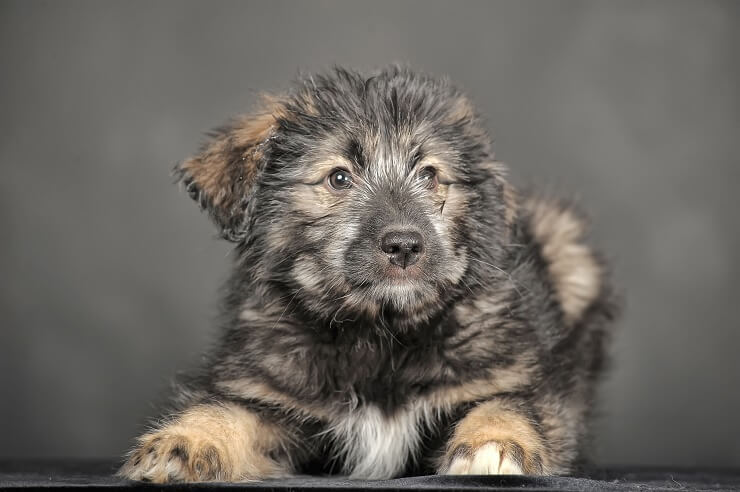
Training a Russian Bear Dog can be a rewarding yet challenging endeavor, given their independent nature and strong-willed personality. To establish a well-behaved and well-adjusted companion, it’s crucial to approach training with patience, consistency, and a deep understanding of their unique traits.
Russian Bear Dogs respond best to positive reinforcement techniques. Use praise, treats, and rewards to reinforce good behavior rather than punishment for bad behavior. This breed thrives on earning rewards and will be more eager to learn if training is an enjoyable experience.
Training Challenges
Training a Russian Bear Dog requires patience, consistency, and an understanding of its independent streak. Their intelligence means they learn quickly, but their strong will can make them appear stubborn. Effective training strategies involve positive reinforcement and setting clear boundaries, emphasizing mutual respect and trust. Due to these challenges, the breed is best suited for experienced dog owners who can commit to the rigorous process of training and socialization.
Russian Bear Dogs can excel in advanced training activities such as agility, obedience trials, and even search and rescue work. These activities provide mental stimulation and challenge their intelligence, making them more well-rounded and fulfilled companions.
FAQs About Russian Bear Dogs
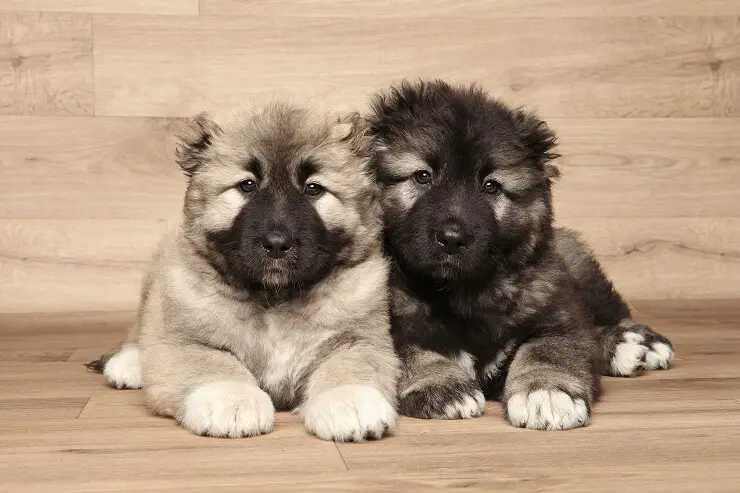
How Much Is a Russian Bear Dog?
The Russian Bear Dog price can vary widely depending on several factors. These factors include the dog’s age, pedigree, lineage, health, and the reputation of the breeder. On average, you can expect to pay between $1,000 and $2,000 for a Russian Bear Dog from a reputable breeder.
How Much Does it Cost to Own a Russian Bear Dog?
After acquiring the dog, you’ll need to budget for regular expenses such as high-quality dog food, grooming supplies, routine veterinary care, training classes, and pet insurance. Additionally, the cost of a secure and spacious living environment, including fencing, must be considered. Overall, the annual expenses for a Russian Bear Dog can add up to $1,000 to $2,000 or more, depending on various factors.
Is a Russian Bear Dog Right for You?
Deciding whether a Russian Bear Dog is right for you depends on your lifestyle, experience, and commitment. These majestic and protective dogs require spacious living arrangements, extensive socialization, and consistent training. If you have experience with large, independent breeds and are willing to invest time and effort into their care, a Russian Bear Dog can be a loyal and devoted companion. However, they may not be suitable for first-time dog owners or those with limited space and resources.
Who Should Get a Russian Bear Dog?
Russian bear dogs are protective, loyal, and loving. These are ideal dogs for families with older children. The breed is intelligent but stubborn, so it’s best suited to experienced dog owners who have the time and patience to train their dogs.
This large dog breed is suitable for a home with a backyard that the dog can access at any time. Active, outdoorsy people living in rural or semi-rural areas are the best owners for energetic Russian bear dogs.
If you have a deep understanding of large, independent breeds, are committed to their exercise and mental stimulation needs, and value a strong bond with a devoted guardian, then a Caucasian Shepherd may be the right choice for you.
Who Should Not Get a Russian Bear Dog?
A Russian Bear Dog is not suitable for first-time dog owners, those living in apartments or small spaces, or individuals with limited experience handling large, independent breeds. Russian bear dogs are large and powerful, so they’re not suitable for people with mobility issues or people who don’t have the strength to control a dog on a leash.
Due to the dog’s large size and high energy requirements, it isn’t good for living in a small home or apartment and is unsuitable as a pet for inactive people or for people who can’t walk their dogs several times a day. If you cannot commit to extensive training, socialization, and providing a secure outdoor environment, this breed may not be appropriate.
Russian bear dogs are naturally aloof and don’t take well to strangers, so people who don’t have the time to train and socialize the dog from an early age shouldn’t consider this breed. Additionally, if you seek a dog solely for companionship without the need for a protective guardian, a different breed may be a better fit. Russian Bear Dogs require dedicated owners who understand and meet their specific needs.

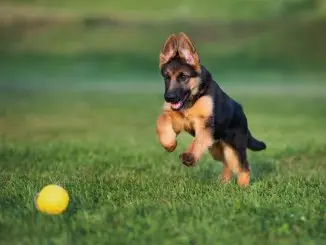
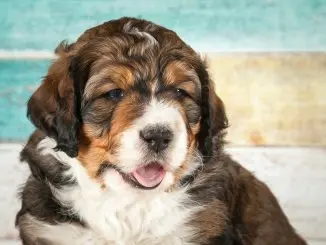
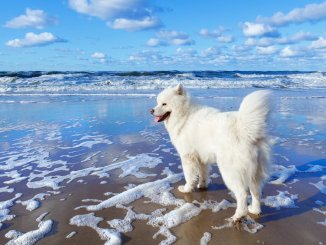
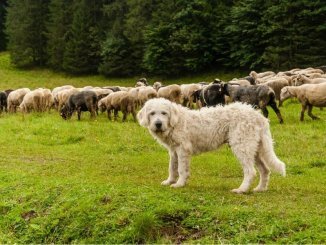
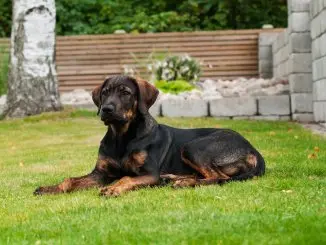
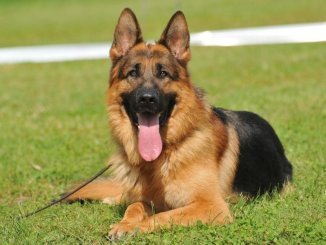

Great information! Can you send me breeder information? Thank you, Bill Marrs